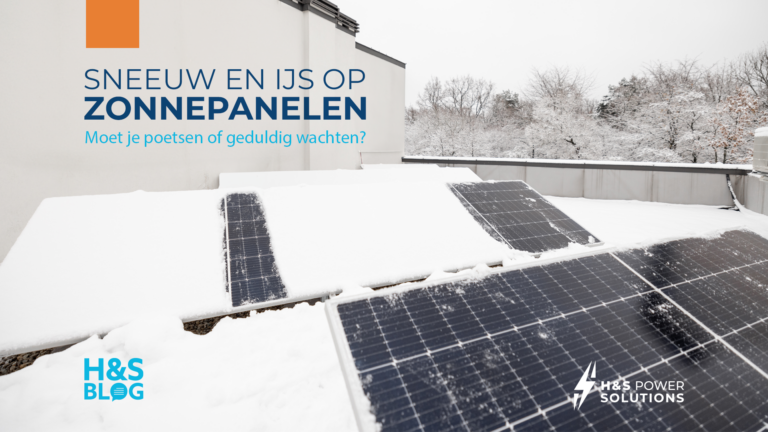There are plenty of reasons to save on your energy bills today. Partly because we want to save on our expensive energy bills and partly because we are concerned with the climate. Whatever your reason, solar panels remain the most popular solution for families. And that’s no mean feat. In this blog, we explain how much solar panels can bring you and how you can calculate it yourself!
How much energy does a solar panel system generate?
How much energy your solar panels generate depends on the amount of solar panels and their strength. The strength of your solar panels is expressed in Watt peak (abbreviated Wp). The solar panels offered by H&S Powersolutions have a strength of 385 Wp, 410 Wp or 545 Wp. To make the calculation, you can calculate about 0.88 kWh per Wp per solar panel.
| Strength | Proceeds |
| 385 Wp per solar panel | 340 kWh per solar panel per year |
| 410 Wp per solar panel | 360 kWh per solar panel per year |
| 545 Wp per solar panel | 480 kWh per solar panel per year |
Did you know: At H&S Powersolutions, you don’t have to pay for your solar panel installation all at once. Our financial advisors will put together a monthly installment plan for you!
How many solar panels will cover your energy consumption?
This depends on the composition of your family. According to VREG figures, an average family consumes 3500 kWh each year. Below we make the calculation of how many solar panels you must have to generate your own 3500 kWh per year with your PV system.
| Strength | Number of solar panels | Total Watt Peak | Proceeds |
| Solar panels of 385 Wp | 10 Solar Panels | 3850 Wp | 3400 kWh of solar energy per year |
| Solar panels of 410 Wp | 10 Solar Panels | 4100 Wp | 3600 kWh of solar energy per year |
| Solar panels of 545 Wp | 7 Solar Panels | 3815 Wp | 3360 kWh of solar energy per year |
In theory, you need 10 solar panels of 385 Wp or 7 solar panels of 545 Wp to self-generate the average family consumption. But; you do not consume 100% of your own generated solar energy. The self-consumption rate for solar panels is around 30%. The energy you don’t consume right away is just lost back to the grid. But we have a solution for that, too; with a home battery, the self-consumption of your PV system is between 60% to even 80% in the best cases. For our calculation, we use 70%.
Tip: Weatherman Frank Deboosere has tracked his solar panel yield every day between 2009 and 2019 and published it on his website. So you can see in detail on each day of the year how much his solar installation has produced.
| Number of solar panels | Without home battery (30% self-consumption) | With home battery (70% self-consumption) |
| 10 solar panels of 385 Wp | 30% of 3400 kWh = 1020 kWh self-consumption per year | 70% of 3400 kWh = 2380 kWh self-consumption per year |
| 10 solar panels of 410 Wp | 30% of 3600 kWh = 1080 kWh self-consumption per year | 70% of 3600 kWh = 2520 kWh self-consumption per year |
| 7 solar panels of 545 Wp | 30% of 3360 kWh = 1008 kWh self-consumption per year | 70% of 3360 kWh = 2352 kWh self-consumption per year |
With a home battery, you will substantially increase your self-consumption and thus you will also reduce your payback time of your PV installation. With this, you no longer need to grab as much electricity from the grid and are thus protected from high energy prices and the upcoming capacity tariff.
In this blog, we explained how you can estimate your own solar yield. If you already have a solar installation, you can easily access My Fluvius
- An average Flemish family consumes 3500 kWh of electricity per year.
- On average, a Flemish family with a solar panel installation consumes 30% of its own generated energy.
- On average, a Flemish family with solar panels and a home battery consumes 70% of its own generated energy.




